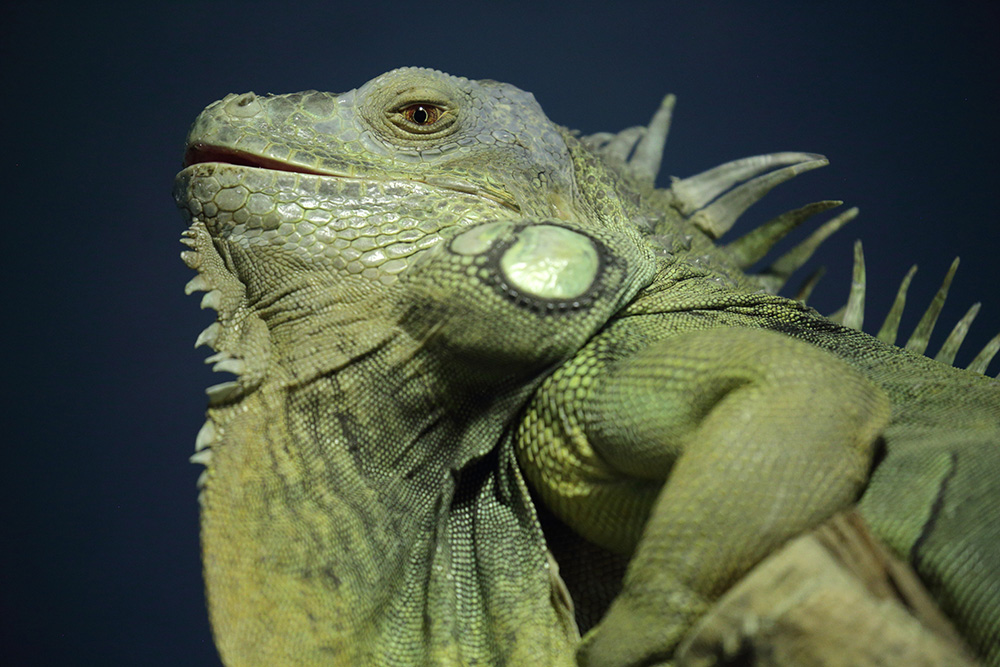Project Description

Green Iguana
Iguana iguana
Animal Class: Reptile
Length: 4-6 feet, including tail.
Weight: Males weigh around 9 pounds, and females weigh around 6 pounds.
Lifespan: Around 20 years.
Diet: Herbivore.
Habitat: In the Americas, green iguanas occupy a wide range of coastal, tropical areas. It is native to Central and South America, as well as parts of the Caribbean, but it may be found as far north as Texas and Florida, in parts of Asia, and the Pacific islands.
The green iguana is considered an invasive species in the Hawaii and Florida, Fiji, and parts of the Caribbean.
Description: Green iguanas are the largest iguana species. Despite their names, they come in a variety of colors including lavender, black, red, and orange. Some are even bright blue as adolescents.
Green iguanas have some interesting physical characteristics including a parietal eye, a “third eye” on top of their head that is sensitive to changes in light and dark and can detect movement. They also have a ridge of spines down their back and a dewlap under their chin that are present on both sexes, although more prominent on males.
Green iguanas are excellent swimmers and swim with their powerful tails. They often use the water to escape danger.
Green iguanas are considered an invasive species in some places they aren’t native to, but have been introduced to, including parts of the Caribbean, Fiji, Hawaii, and Texas. They can be disastrous for native species, such as in Texas, where they often usurp burrowing owl burrows or Fiji, where they spread disease to the native iguana population.
Conservation Status: Least Concern
Our Animals: Diceros


